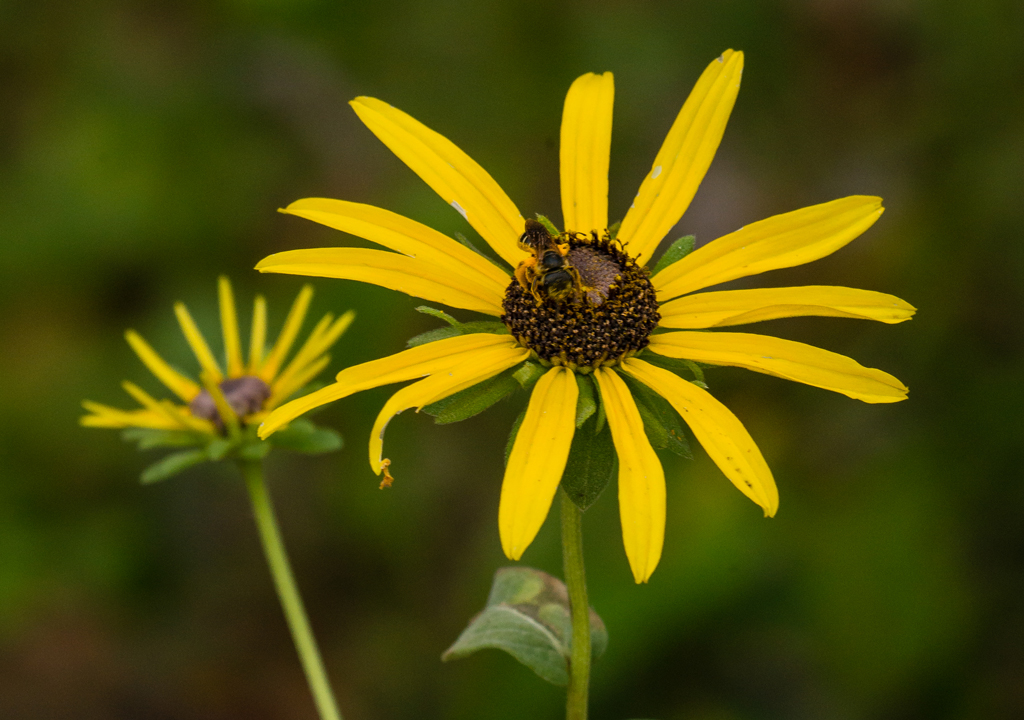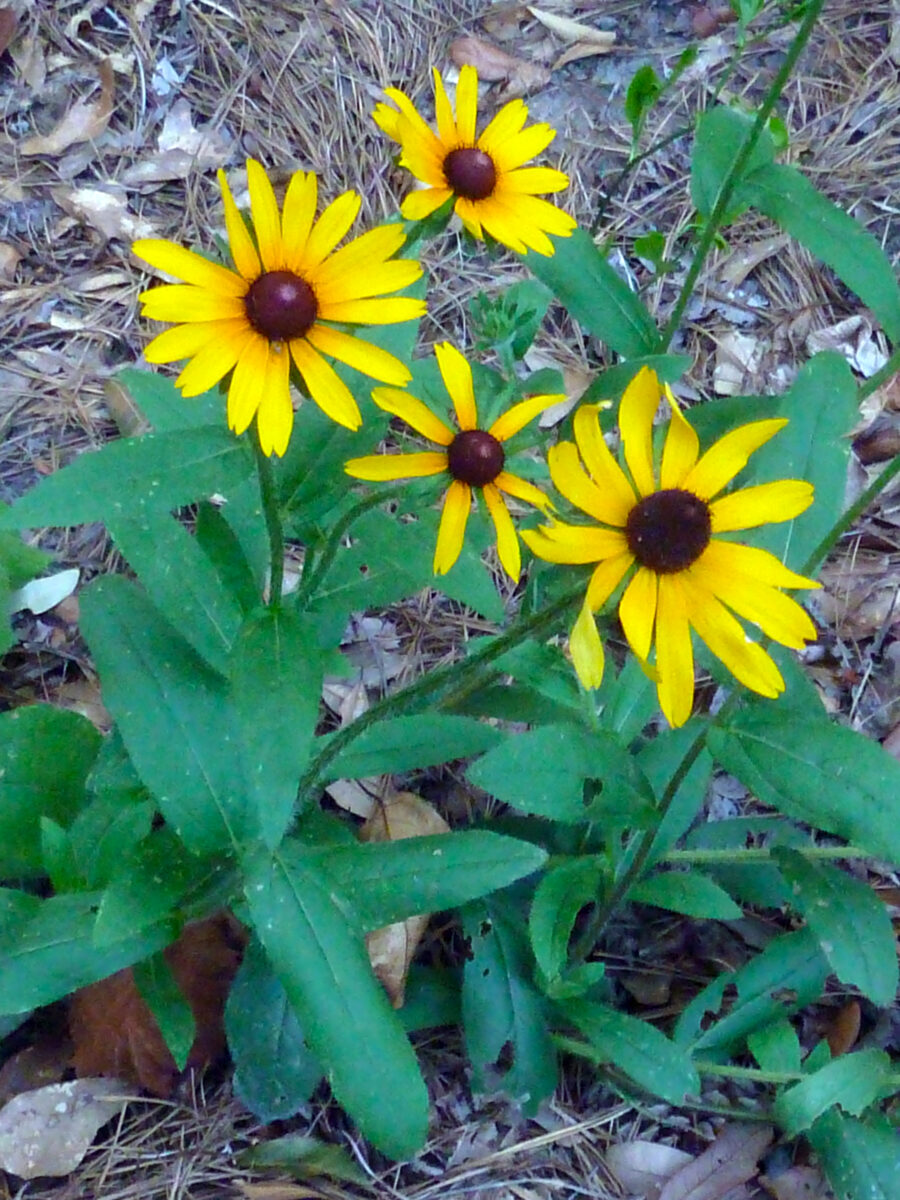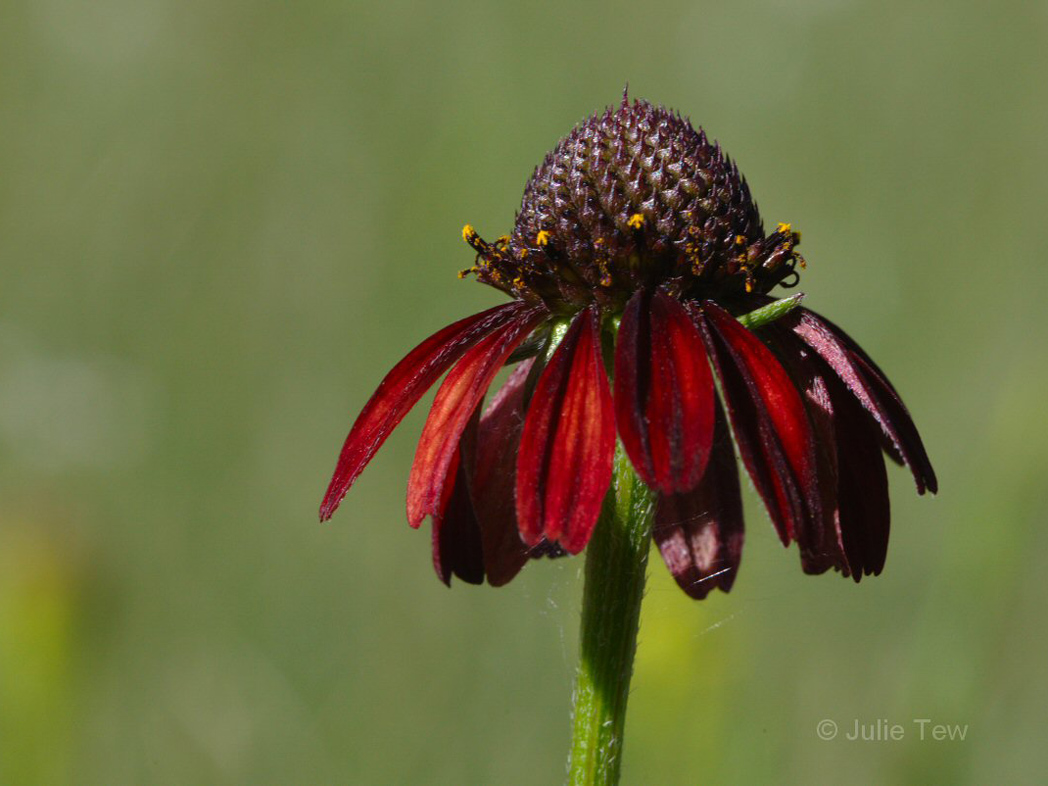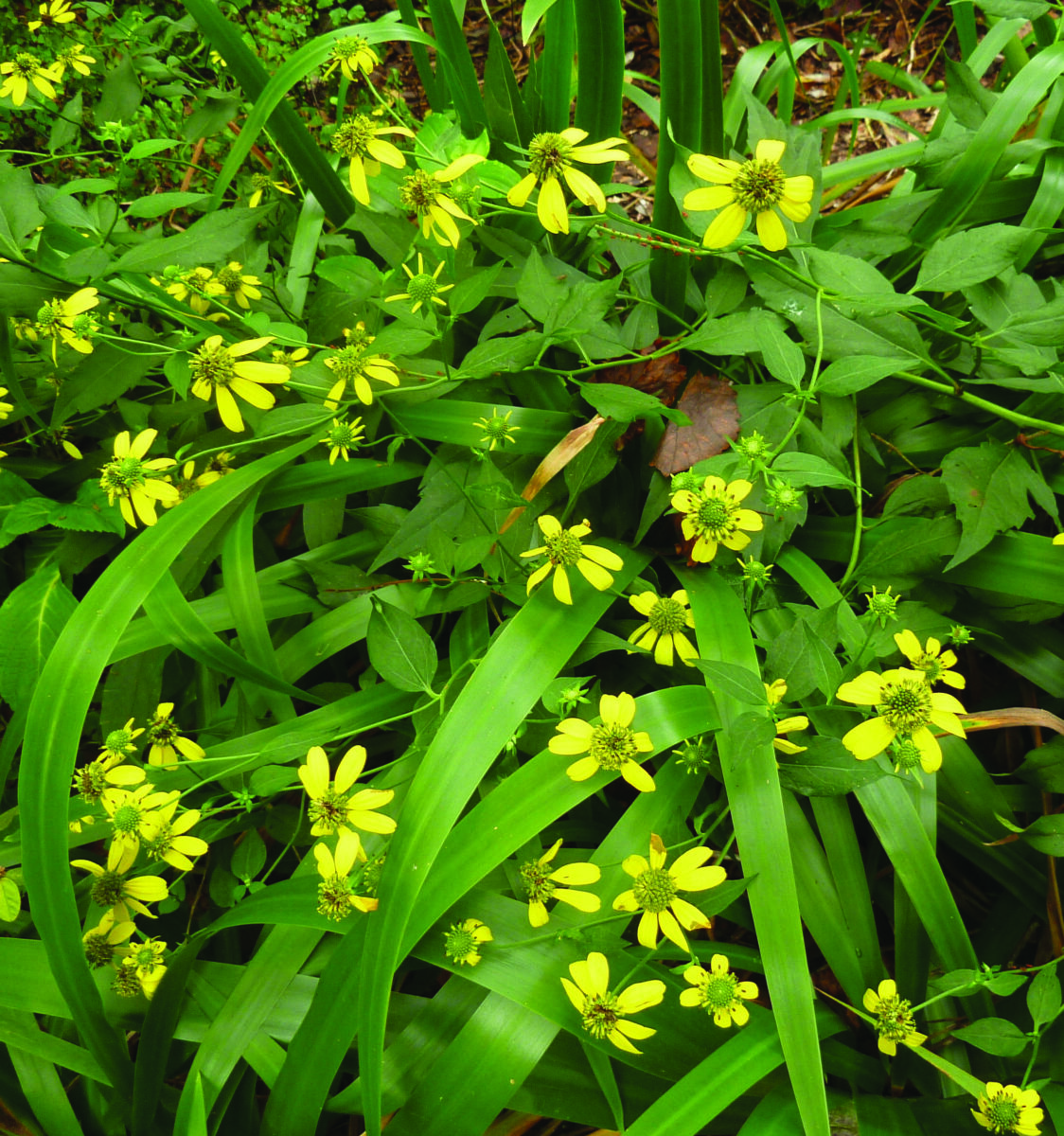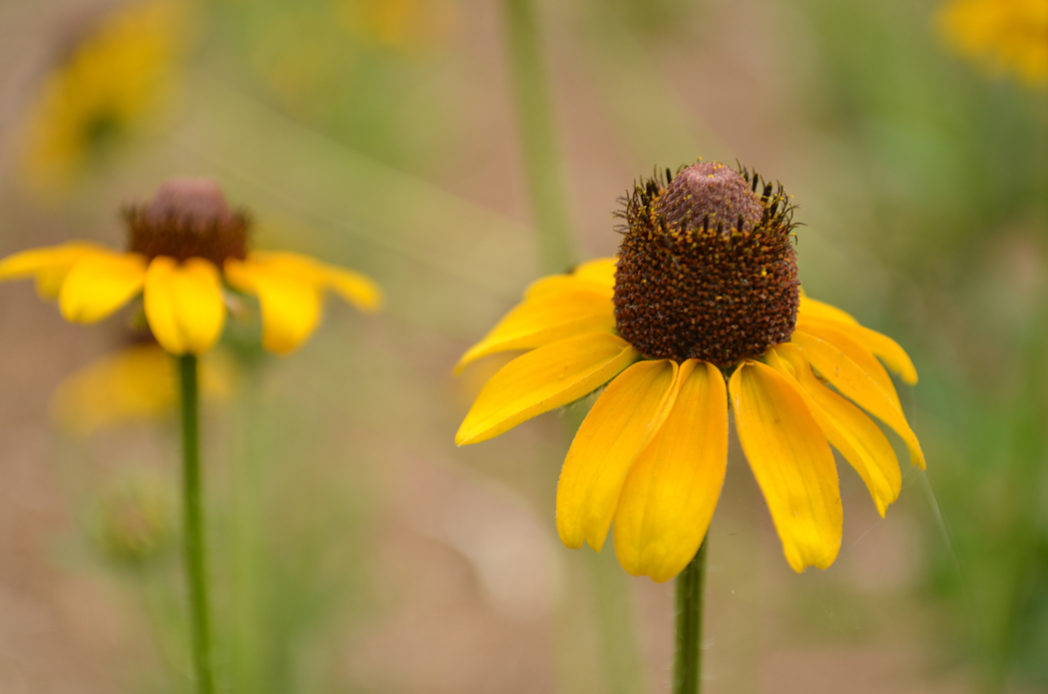Softhair coneflower
Pictured above: Softhair coneflower (Rudbeckia mollis) by Keith Bradley. Click on terms for botanical definitions. View post as a PDF.
Softhair coneflower (Rudbeckia mollis) is a robust plant with bright yellow blooms that provide late spring and summer color to sandhills, dry open hammocks and roadsides in North and Central Florida. Butterflies and Halictid bees nectar on the flowers, while small birds enjoy eating the seeds.
Softhair coneflower’s terminal blooms are comprised of many long yellow ray florets that typically arch downward, giving the flower its eponymous cone shape. Center disk florets are purplish-brown, flat and densely packed. Bracts are lanceolate and pubescent. Basal leaves are large (2–3 inches long), have toothed margins, and are covered in tiny hairs, giving them a grayish-green hue. They are arranged in a rosette. Stem leaves are sessile and elliptic to spatulate with toothed margins (occasionally entire). Arrangement is alternate. Stems are rigid and covered in tiny hairs. Upper stems are branched. Seeds are born in achenes.
The genus name Rudbeckia is an homage to Oluf Rudbeck the Younger (1660–1740) and his father, Oluf Rudbeck the Elder (1630–1702), both of whom were Swedish botanists and professors of Carl Linnaeus, the father of modern taxonomy.
Family: Asteraceae (Aster, composite or daisy family)
Native range: Panhandle, north and central peninsula
To see where natural populations of Rudbeckia mollis have been vouchered, visit florida.plantatlas.usf.edu.
Lifespan: Biennial (may act as annual or short-lived perennial)
Soil: Moderately moist to dry, well-drained sandy soils
Exposure: Full sun to minimal shade
Growth habit: Up to 4’ tall
Propagation: Seed
Florida regions of landscape suitability: North, Central
Garden tips: Use Softhair coneflower in a mixed wildflower planting or in the back of a planting where its height can be appreciated. It is drought tolerant and requires little to no maintenance once established. It does not tolerate prolonged shade. Although the plant typically perishes after it blooms, it is a prolific self-seeder and can produce many seedlings. Seeds can be collected from dry seedheads. Sow in trays or spread in open sandy areas and lightly cover with pine straw.
Softhair coneflower is often available from nurseries that specialize in Florida native plants. Visit www.PlantRealFlorida.org to find a nursery in your area. Seeds may be available through the Florida Wildflowers Growers Cooperative.
Learn more about Softhair coneflower from the Institute for Regional Conservation.
For information on other Rudbeckia species, see these resources:

